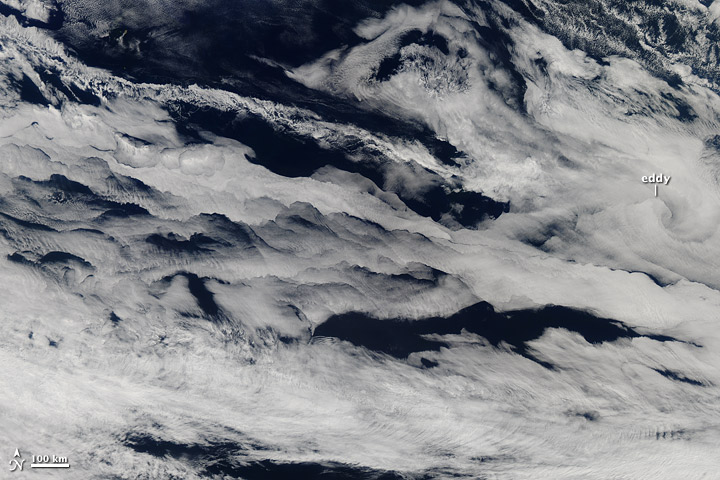Algae Snot Explodes Cloud Formation Mystery

A cloud is a cloud, is a cloud. But scientists have now found that at least some clouds contain biological particles that can be genetically analyzed to show where the cloud came from.
In the case of a study presented last week at the Ocean Sciences Meeting in Honolulu, the clouds were over the Arctic Ocean and the particles were microgels -- snot-like substances containing proteins -- created by algae that live on sea ice.
The discovery that the carbon-based products of living things in the oceans are part of the process that creates clouds is a major shift in understanding ocean clouds, and therefore a rather crucial matter, say scientists, because clouds play a very important role in the models that are used to study climate.
PHOTOS: Intense Winter Storm Blasts U.S. States
"It's a whole new paradigm," said chemist David Kieber of the State University of New York in Syracuse. “And it is important because understanding clouds is key.”
Since the 1950s most scientists thought that over the oceans, where there's usually not a lot of dust to serve as the seeds for cloud droplets, the role was filled by salt particles. That turns out to be wrong.
“A lot of people are still back in the '50s on this matter,” said Kieber. “Honestly, in the '70s and '80s everybody thought it was salt. Salt was the main thing.”
What California's Rainstormageddon Looked Like From Space
The cloud-forming microgels were the focus of a talk by Monica Orellana of the University of Washington, who was part of team that used balloons with threads of monofilament line to collect water droplets from clouds over the Arctic ocean during an expedition in 2008.
Get the world’s most fascinating discoveries delivered straight to your inbox.
“We went to the Arctic to look at aerosols because it's a simple system,” said Paty Matrai, of Bigelow Labs for Ocean Sciences. Matrai was was part of the expedition team. “The air quality in the center of the Arctic in summer is very clean.”
It's a great place to look for the organic inputs from the sea into the clouds, which they found.
“It means there is an intimate connection between the seawater and the clouds,” said Matrai. “It's a revolution in aerosol chemistry.”
The microgels they found contained genetic signs of having come from algae with anti-freeze adaptations -- just like those that grow in sea ice.
As to how these microgels get into the air, that could be as simple as bubbles popping on the surface, said Kieber, who gave a related talk on what this means to the carbon balance of the seas in the same session of the meeting.
NEWS: Drought Tortures Half of U.S.
The nature of substances inside a tiny bubble that comes up from the depths changes dramatically as the pressure changes, acidity changes and it's suddenly exposed to the atmosphere, Kieber explained.
In fact, a lot more than just algae snot is in the clouds, Kieber said. It's beginning to look like scientists have found a previously unknown conduit for carbon to pass from the seas -- even the deep seas -- into the atmosphere.
“Our understanding of major processes involving this important component of the earth system is evolving rapidly,” agreed atmosphere researcher Bill Keene of the University of Virginia in Charlottesville.
NEWS: Big Storm Coming...Or Not: Uncertainty in Forecasts
The shift, say the researchers, is largely due to an international scientific initiative called the Surface Ocean Lower Atmosphere Study (SOLAS), a part of the International Geosphere-Biosphere Programme. The goal of the program is to work out the details of how the ocean and atmosphere interact and are affected -- and affect -- climate change. As a result, SOLAS includes meteorologists, oceanographers, chemists and marine biologists.
That makes for some very exciting discoveries and exceptionally interesting research, said Kieber. But its novelty and multidisciplinary nature also makes it a lot harder to get funding for, he said.
“We really are in the infancy of understanding the stuff,” Kieber said.
This story was provided by Discovery News.


